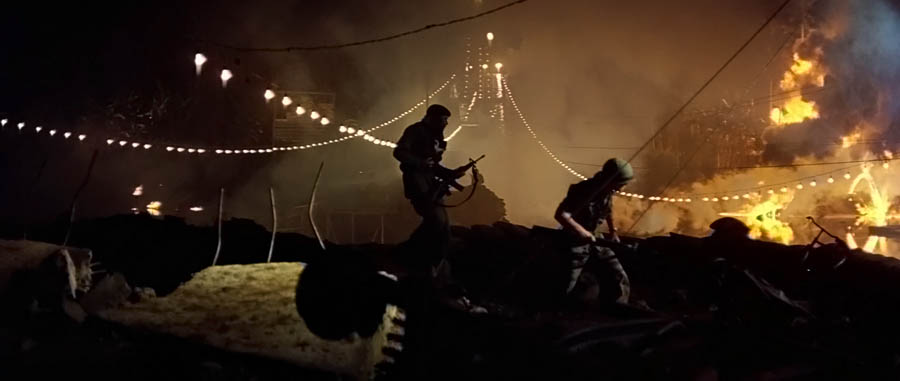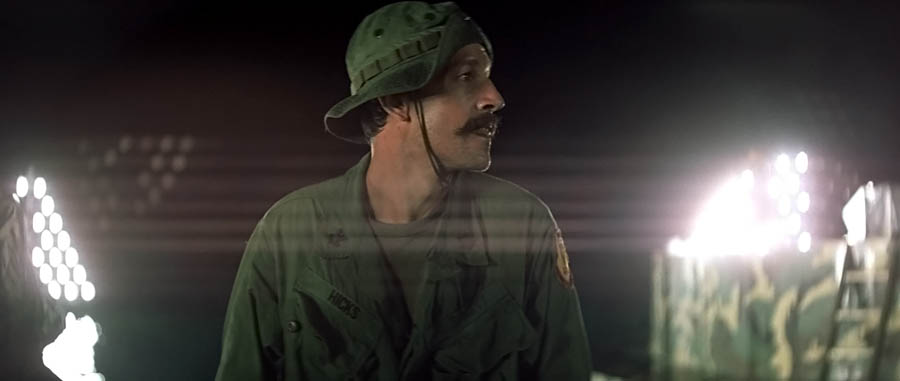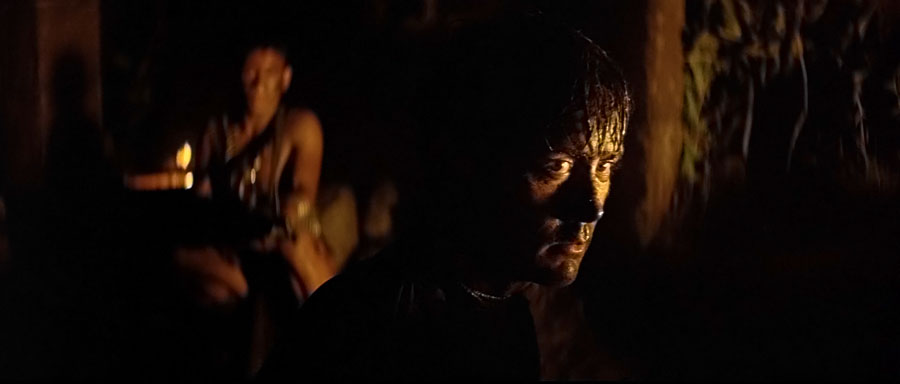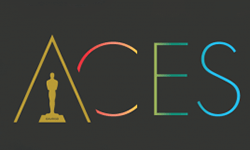#8. I started college at the University of Virginia in the Fall of 1980. Going off to college was a big enough transition but this was also the first presidential election I could vote in, and near the end of the semester, we heard the news that John Lennon had been killed -- the campus was filled with the sounds of “Imagine”. There was a fairly large main street cinema in Charlottesville and I saw “Apocalypse Now” for the first time there, even though it had been released the year before. This was a time when I was just starting to watch a lot of serious R-rated dramas and foreign films rather than just the mainstream stuff. U.Va took cinema-watching seriously; there were revival screenings all over campus, particularly by the English Department, and there was Vinegar Hill Cinema, the small revival theater in town. A lot of these older movies shown on campus were probably 16mm prints, which was not uncommon back then. Projection across town was uneven enough for me to learn all things that could go wrong during a movie screening.
What I remembered most strongly about “Apocalypse Now” that first time was the overpowering sense of dread and pervasive darkness in the interior temple scenes at the end. I had seen dark scenes before, but I couldn’t remember a sequence where that mood was sustained for so long. Later I learned how the sound design was also contributing to that immersive effect, but at first I mainly noticed the lighting.
Less than two years later I also saw “Reds” and started reading everything I could about Vittorio Storaro. In many ways, he is an excellent study for the film student because he could articulate the intellectual basis for his decisions, unlike many other visual artists who cannot always explain where their ideas come from. Before Storaro, I hadn’t realized that the cinematography in a movie could be structured in the same way that the narrative was structured, that you could design an overall arc to the lighting and colors beyond what you did scene-to-scene to tell the story. He made “Apocalypse Now” before his interest in color symbolism, so the design of that movie was more centered around light rather than color.
There is a visual conflict between what Storaro called “artificial” energies and natural energies that mirrored the conflict between the U.S. military and the Vietnamese fighters. The American forces are symbolized by modern electrical lighting that seems out of place in the jungle environment, whereas Kurtz and the villagers are represented by natural light and pre-electricity sources like fire. This manifests itself most clearly in the Playboy Bunny Show at night in the jungle, but also in the Do Long Bridge battle sequence. The lights hitting and flaring the anamorphic lenses create a surreal visual experience. Later Storaro famously extended this sort of visual symbolism to include color, which I think comes together so well in “The Last Emperor”. Even today, when I breakdown a script and plan a visual structure, I often go into WWSD (What Would Storaro Do?) mode.




I find that most movies fall into two basic structures, one is a journey from A to B, and then other is a conflict between the worlds of A and B. So either the movie starts as one thing but ends at another thing, or it cuts between one and the other. There is a third type of film, the one that doesn’t change, it has the same tone and look throughout, like a world that you cannot escape, almost like it is hovering in some sort of oppressive twilight (or a happy summer’s day). Of course, I'm simplifying, there are movies with A, B, C, and D worlds and conflicts, etc.
Horror films, being in a genre that lends itself to stylization, are good examples to study these structures. Many start out in a pleasant sunny everyday world but end up in some sort of expressionist nightmare, often at night. Others juxtapose a reoccurring nightmare against the recognizable world. And others just suck you into an oppressive nightmarish environment from the first frame and never let go, and never really change (except maybe at the end, if it ends happily.) Anyway, I first learned how to design the look of a movie from watching Storaro’s work and reading articles about those movies.
Copyright © CML. All rights reserved.
- aces.png
- aces.png
- aces.png
- aces.png
- 24-7.jpg
- 24-7.jpg
- arri.png
- arri.png
- BandH.jpg
- camalot.png
- camalot.png
- dedo.png
- dsc.png
- dsc.png
- kino.png
- Hawk.png
- JustCinemaGear.jpg
- Leitz_logo.png
- Leitz_logo.png
- Lowing.gif
- Module8Logo.png
- GodoxLogo.png
- Nanlux.png
- NPV_new_logo-(3)-(002).png
- NMBLogoForCML.png
- lindseyo.jpg
- Aputure.png
- TC Logo Centered K_2.png
- VMI.png
- zeiss-logo.png
- zeiss-logo.png
- aces.png
- aces.png
- aces.png
- aces.png
- 24-7.jpg
- 24-7.jpg
- arri.png
- arri.png
- BandH.jpg
- camalot.png
- camalot.png
- dedo.png
- dsc.png
- dsc.png
- FUJINON.jpg
- JustCinemaGear.jpg
- Leitz_logo.png
- Leitz_logo.png
- GodoxLogo.png
- Nanlux.png
- NPV_new_logo-(3)-(002).png
- NMBLogoForCML.png
- FilmLightLogo.png
- theKeep.png
- NewLifeCineLogo.png
- PostWorks.png
- Aputure.png
- TCS.png
- TC Logo Centered K_2.png
- zeiss-logo.png
- zeiss-logo.png
- aces.png
- aces.png
- aces.png
- aces.png
- 24-7.jpg
- 24-7.jpg
- arri.png
- arri.png
- BandH.jpg
- camalot.png
- camalot.png
- dedo.png
- dsc.png
- dsc.png
- kino.png
- Hawk.png
- JustCinemaGear.jpg
- Leitz_logo.png
- Leitz_logo.png
- Lowing.gif
- Module8Logo.png
- GodoxLogo.png
- Nanlux.png
- NPV_new_logo-(3)-(002).png
- NMBLogoForCML.png
- lindseyo.jpg
- Aputure.png
- TC Logo Centered K_2.png
- VMI.png
- zeiss-logo.png
- zeiss-logo.png
- aces.png
- aces.png
- aces.png
- aces.png
- 24-7.jpg
- 24-7.jpg
- arri.png
- arri.png
- BandH.jpg
- camalot.png
- camalot.png
- dedo.png
- dsc.png
- dsc.png
- FUJINON.jpg
- JustCinemaGear.jpg
- Leitz_logo.png
- Leitz_logo.png
- GodoxLogo.png
- Nanlux.png
- NPV_new_logo-(3)-(002).png
- NMBLogoForCML.png
- FilmLightLogo.png
- theKeep.png
- NewLifeCineLogo.png
- PostWorks.png
- Aputure.png
- TCS.png
- TC Logo Centered K_2.png
- zeiss-logo.png
- zeiss-logo.png
- aces.png
- aces.png
- aces.png
- aces.png
- 24-7.jpg
- 24-7.jpg
- arri.png
- arri.png
- BandH.jpg
- camalot.png
- camalot.png
- dedo.png
- dsc.png
- dsc.png
- kino.png
- Hawk.png
- JustCinemaGear.jpg
- Leitz_logo.png
- Leitz_logo.png
- Lowing.gif
- Module8Logo.png
- GodoxLogo.png
- Nanlux.png
- NPV_new_logo-(3)-(002).png
- NMBLogoForCML.png
- lindseyo.jpg
- Aputure.png
- TC Logo Centered K_2.png
- VMI.png
- zeiss-logo.png
- zeiss-logo.png
- aces.png
- aces.png
- aces.png
- aces.png
- 24-7.jpg
- 24-7.jpg
- arri.png
- arri.png
- BandH.jpg
- camalot.png
- camalot.png
- dedo.png
- dsc.png
- dsc.png
- FUJINON.jpg
- JustCinemaGear.jpg
- Leitz_logo.png
- Leitz_logo.png
- GodoxLogo.png
- Nanlux.png
- NPV_new_logo-(3)-(002).png
- NMBLogoForCML.png
- FilmLightLogo.png
- theKeep.png
- NewLifeCineLogo.png
- PostWorks.png
- Aputure.png
- TCS.png
- TC Logo Centered K_2.png
- zeiss-logo.png
- zeiss-logo.png
- aces.png
- aces.png
- aces.png
- aces.png
- 24-7.jpg
- 24-7.jpg
- arri.png
- arri.png
- BandH.jpg
- camalot.png
- camalot.png
- dedo.png
- dsc.png
- dsc.png
- kino.png
- Hawk.png
- JustCinemaGear.jpg
- Leitz_logo.png
- Leitz_logo.png
- Lowing.gif
- Module8Logo.png
- GodoxLogo.png
- Nanlux.png
- NPV_new_logo-(3)-(002).png
- NMBLogoForCML.png
- lindseyo.jpg
- Aputure.png
- TC Logo Centered K_2.png
- VMI.png
- zeiss-logo.png
- zeiss-logo.png
- aces.png
- aces.png
- aces.png
- aces.png
- 24-7.jpg
- 24-7.jpg
- arri.png
- arri.png
- BandH.jpg
- camalot.png
- camalot.png
- dedo.png
- dsc.png
- dsc.png
- FUJINON.jpg
- JustCinemaGear.jpg
- Leitz_logo.png
- Leitz_logo.png
- GodoxLogo.png
- Nanlux.png
- NPV_new_logo-(3)-(002).png
- NMBLogoForCML.png
- FilmLightLogo.png
- theKeep.png
- NewLifeCineLogo.png
- PostWorks.png
- Aputure.png
- TCS.png
- TC Logo Centered K_2.png
- zeiss-logo.png
- zeiss-logo.png


